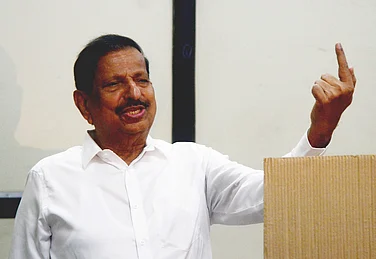Cows possess a special human-animal bond in India because of their various important roles in farming, culture and religion. About two million years ago, the first members of a new genus of grazing animal, Bos, began to appear in northern India and established themselves as wild cattle or aurochs in India and central East Asia.
India has the largest cow population in the world. Around 142.11 million are indigenous. The crossbreed population account for 21 per cent of the total cattle in the country. To be precise, they are 50.42 million in number, as of 2019. Usually, the crossbreed fails to adapt to the Indian conditions and their average lifespan is also less than that of indigenous breeds. Even in the best farms of the country, crossbred varieties are only able to survive for 3.4 lactations as compared to 9-10 lactations for the indigenous varieties at the farmer’s level.
As a result, most end up as stray cattle. Indigenous cows produce healthy A2 beta-casein-enriched milk which is safe and healthy for consumption. The crossbreeding between Indian cows and European breeds like Holsteins Friesen and Jersey which are known generically as Bos Taurus has incorporated the A1 gene into the new species, leading to the unique formation of A1 beta-casein which is not healthy for human consumption in long run.
The village economy is self-sufficient and centred on ‘Goumatha- Cow’. Cows and their products have been extensively used by farmers as well as the common people of India. They serve as the source of income (through the sale of milk, ghee, curd, buttermilk, cheese, etc.), employment, social security (farmers sell their animals to pay debts), and transportation (for ploughing the field and carting). Of all the cow products the most valuable is milk. 209 million tonnes, an all-time high in milk production, has been recorded in 2020-21, of which more than half came from cows. On average, indigenous cows produce 3.34 kg of milk a day which serves as a source of nutrients for humans. Hence the consumption of milk is very wide across the nation.
Another product is cow dung is being used as manure/organic fertiliser, besides being used as manure. Approximately, 40-70 per cent of all manure produced by Indian cattle is used as fuel (biogas) for cooking. People of India also have cow-centric festivals such as Govardhan puja and Gopashtami that determine their love and faith towards them.
It is really unfortunate that the cow and its progeny which was the backbone of agriculture and village economy in ancient India, are of very limited use today. According to the livestock census data, there are more than 5 million stray cattle in India. Odisha tops the list with more than a million, followed by UP, Rajasthan, MP, West Bengal and Gujarat. Based on the Indian government data, stray animals caused many road accidents, leading to around 1130, 1425, and 1305 deaths of humans in 2018, 2019, 2020 respectively, all over India.
In urban areas, abandoned cows usually consume large quantities of indigestible and potentially toxic materials like plastic in their search for feed. The four-compartment cow stomach cannot expel these plastic bags, which remain trapped inside, rendering the animal unable to eat and slowly starving to death.
Another problem which arises after abandoning these cows is crop-raiding in the villages which leads to human-animal conflict which sometimes is aggravated on a big scale.
The main cause behind these outcomes is rapid urbanisation, mechanisation of farming operations, abandoning of cows by owners because of reduced production of milk products and fragmentation of pastures and grazing lands.
Many state governments have focused on spending on infrastructure for providing shelters to cows, which comprise gaushalas, shelters where abandoned, infertile, and chronically ill cows are sheltered by animal protection organisations and religious organisations. There are more than 5000 gaushalas and nearly 5 million street cows in India, according to a recent livestock census report [2019]. But the high stocking density, poor design of the stalls, and the flooring of the sheds, absent water points have raised an issue in this area.
Gaushalas often face inadequacy of skilled labour, financial constraints and a lack of veterinary support. They sometimes also suffer from malnutrition, further compounding pre-existing reproductive disorders, like anoestrous, repeat breeding, uterine infection, cervicitis, retention of the placenta, and mastitis.
The major challenges to cow welfare are shelter and space, fodder, health and medication, and proper utilization of animal resources. Several state governments and central ministries have taken initiatives for the welfare of cattle. Like the scheme, ‘Provision of Shelter House for Looking After Animals in Distress’ is being implemented through the Animal Welfare Board of India, under which NGOs and AWOs are given financial assistance to establish shelter houses. One such ministry is the Ministry of Fisheries, Animal Husbandry and Dairying. This ministry has started the Rashtriya Gokul mission, National Livestock Mission, Livestock Health and Disease Control, the National Programme for dairy development, the Livestock census and Integrated Sample Survey, and several other schemes with the objective of cattle welfare in India.
However, the implementation of these need strict monitoring if we are to look after and rehabilitate cows. Till then, the cow remains more revered than responsibly cared for.
Dr. Vijay Pal Singh works as a veterinarian doctor in the Council of Scientific and Industrial Research (CSIR)-Institute of Genomics and Integrative Biology and Assistant Professor in the Academy of Scientific and Innovative Research (AcSIR), New Delhi.





















